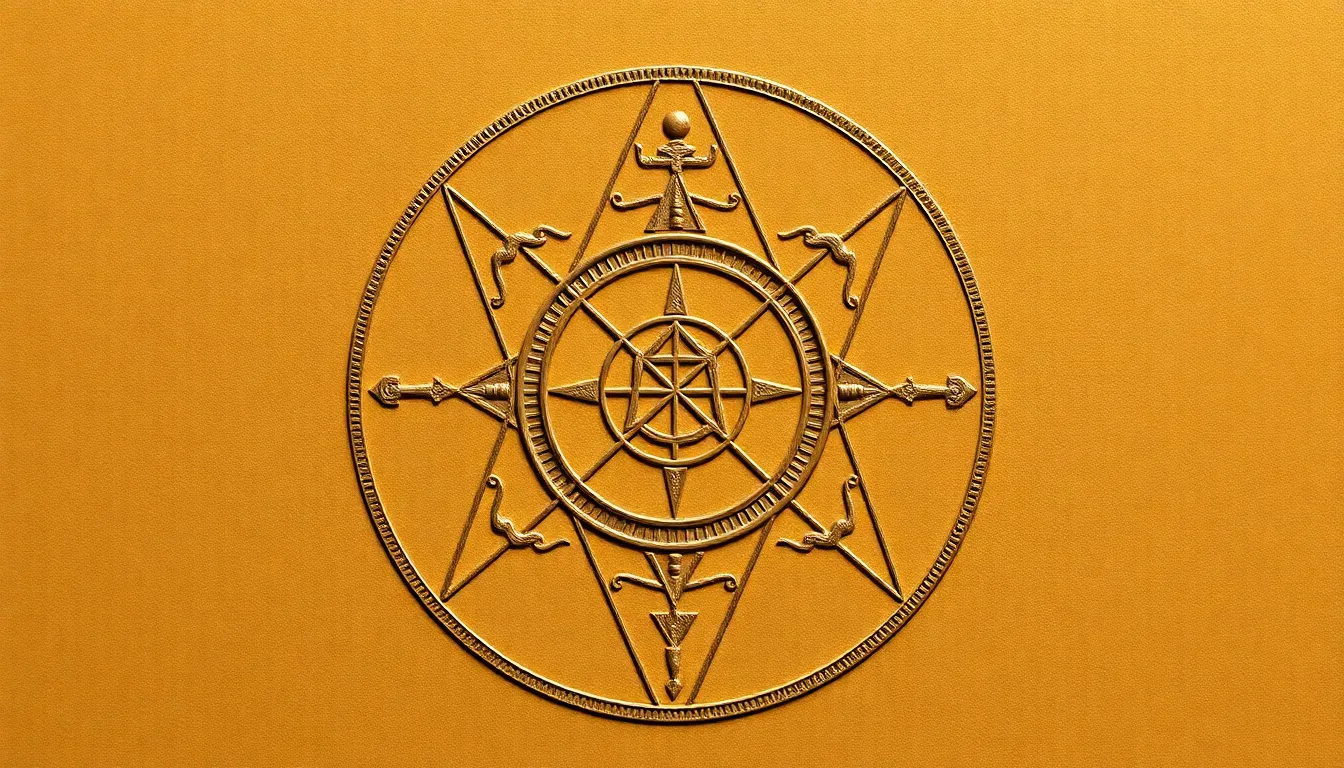The Sacred Geometry of the Four Sons of Horus
Introduction to the Four Sons of Horus
In Egyptian mythology, Horus is one of the most significant deities, often associated with the sky, kingship, and protection. He is depicted as a falcon or as a man with a falcon head. Horus’s legacy is carried on through his four sons, known as the Sons of Horus: Imsety, Hapi, Duamutef, and Qebehsenuef. Each son plays a crucial role in protecting the deceased and ensuring a safe journey to the afterlife.
The significance of these four sons goes beyond their protective roles; they embody various aspects of life and the afterlife, each associated with specific elements and functions within the funerary practices of ancient Egypt.
Understanding Sacred Geometry in Ancient Egypt
Sacred geometry refers to the geometric shapes and patterns that have been historically associated with spiritual significance and the underlying patterns of the universe. In ancient Egypt, geometry was not merely a mathematical tool but a profound representation of the cosmos, divinity, and the natural world.
The role of sacred geometry in Egyptian art and architecture is evident in the design of temples, pyramids, and tombs, where shapes such as circles, squares, and triangles are imbued with religious meaning. These geometric forms are thought to reflect the harmony and order of the universe, which is a central tenet of Egyptian spirituality.
Symbolism of Each Son of Horus
Each of the Four Sons of Horus is associated with specific characteristics and symbols that reflect their roles in both mythology and funerary practices:
- Imsety: The human-headed son, often associated with the element of earth. He is the protector of the liver and is depicted as a man with a human head. His role symbolizes stability and grounding in the afterlife.
- Hapi: The baboon-headed son, representing the element of water. Hapi is the guardian of the lungs and is depicted with the head of a baboon. He symbolizes the flow of life and the nurturing aspects of water.
- Duamutef: The jackal-headed son, associated with the element of fire. He guards the stomach and is depicted with the head of a jackal. His symbolism relates to protection and the transformative power of fire.
- Qebehsenuef: The falcon-headed son, representing the element of air. He is the protector of the intestines and is depicted with a falcon head. His role signifies freedom, the soul’s journey, and the connection to the divine.
Geometric Patterns Associated with the Sons of Horus
The geometric shapes and patterns linked to each Son of Horus reflect their attributes and roles within Egyptian mythology. Each son has distinct geometric associations that resonate with their symbolism:
- Imsety: Squares and rectangles, symbolizing stability and the earthly realm.
- Hapi: Wavy lines and curves, representing the flow of water and the nurturing aspect of life.
- Duamutef: Triangular shapes, indicating fire’s transformative power and strength.
- Qebehsenuef: Spirals and circular patterns, symbolizing the air and the cyclical nature of life.
These geometric patterns enhance the understanding of each son’s role and their connection to the natural elements, illustrating how geometry was woven into the very fabric of Egyptian spirituality.
The Role of the Four Sons in Egyptian Funerary Practices
The Four Sons of Horus played a vital role in Egyptian funerary practices, particularly in the context of mummification and the afterlife. They were believed to protect the organs of the deceased, which were removed during the mummification process and placed in canopic jars.
Each canopic jar was dedicated to one of the sons, and their designs incorporated sacred geometric patterns:
- Imsety’s jar guarded the liver.
- Hapi’s jar protected the lungs.
- Duamutef’s jar safeguarded the stomach.
- Qebehsenuef’s jar contained the intestines.
The canopic jars were often beautifully crafted, adorned with symbols and geometric designs that reflected the spiritual significance of their contents and their protective roles in the afterlife.
Interconnections Between the Sons of Horus and the Elements
Each Son of Horus is associated with one of the four classical elements: earth, water, fire, and air. These elemental associations illustrate their functions and roles in the afterlife, as well as their importance in the cycle of life:
- Imsety: Earth – symbolizes stability and grounding.
- Hapi: Water – represents life, nourishment, and the emotional flow.
- Duamutef: Fire – signifies transformation, protection, and energy.
- Qebehsenuef: Air – embodies freedom, the soul’s journey, and connection to the divine.
Sacred geometry serves as a visual representation of these elemental relationships, connecting the physical and spiritual realms in a harmonious balance.
Influence of the Four Sons of Horus in Modern Spiritual Practices
In contemporary spiritual movements, the Four Sons of Horus continue to inspire and resonate with practitioners. Their symbolism and the concepts of sacred geometry are often integrated into modern spiritual practices, including meditation, energy healing, and sacred art.
The resurgence of interest in sacred geometry has led to a deeper exploration of its applications and meanings in today’s world. Many individuals find that the geometric patterns associated with the Sons of Horus provide a framework for understanding the universe and their place within it.
Conclusion: The Timeless Legacy of the Four Sons of Horus
The Four Sons of Horus represent not only the protective forces in the afterlife but also embody the sacred geometry that permeates ancient Egyptian culture. Their timeless legacy is a testament to the intricate connections between mythology, geometry, and spirituality.
As we delve into the meanings behind these figures and their geometric associations, we gain valuable insights into the worldview of ancient Egyptians. The intersection of these elements continues to inspire and inform our understanding of both the past and the present.




